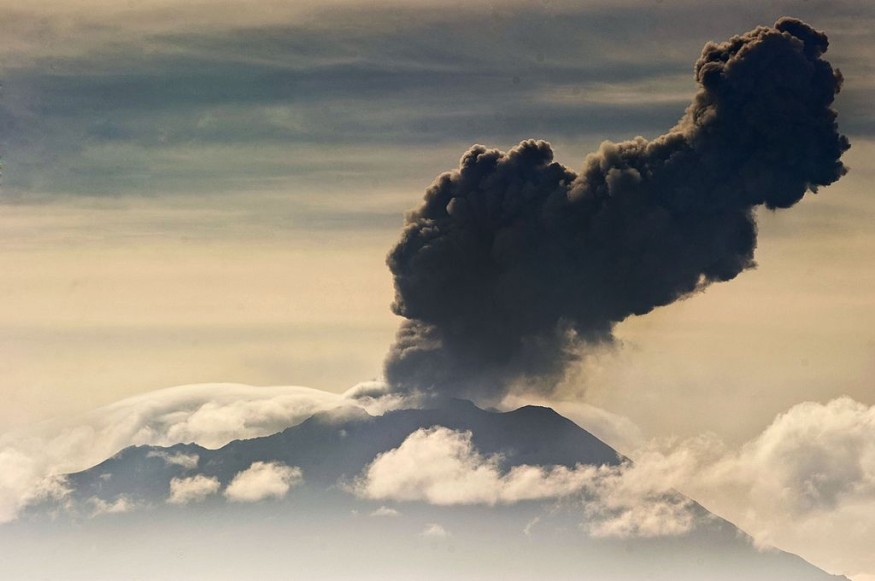Peru: Ubinas Volcano Shows Unrest; State of Emergency Eyed

Peru is set to declare an emergency status in the vicinity of the Ubinas volcano, located in the southern region of Moquegua, according to Reuters.
The country's prime minister, Alberto Otarola, announced on Monday in response to the ongoing emission of ash from the volcano, which is considered the most active in Peru.
The National Institute of Civil Defense (Indeci) issued a statement indicating that the alert level for the area has been raised from "yellow" to "orange" based on national standards.
This decision was prompted by the volcano's recent ash emissions, which reached a height of approximately 1,700 meters.
The southern region of Peru, known for its significant mining sites, is home to a cluster of active volcanoes.
Considering the situation, Prime Minister Otarola emphasized the importance of taking preventive measures to safeguard the region.
He stated that the official declaration of emergency status would likely be made in the coming days to facilitate the implementation of necessary measures.
Indeci has advised the local population of around 2,000 individuals to steer clear of the volcano and keep doors and windows closed.
Additionally, authorities have distributed masks and glasses to help protect residents from potential ash-related hazards.
Read also: Mexico: Popocatepetl Volcano Rumbles To Life
Peru's Ubinas Volcano
The Ubinas volcano, situated in Peru and recognized as the country's most active volcano, holds a significant position within the "Ring of Fire," an area characterized by heightened seismic activity encircling the Pacific Ocean's tectonic plate, Al Jazeera noted.
The current eruption of Ubinas commenced around June 22. In the following days, the institute recorded 402 earthquakes associated with the volcano between June 23 and 25, according to the Geophysics Institute of Peru (IGP).
During this period of heightened activity, a plume of ash rose to an elevation of nearly 1,300 meters (4,265 feet) above the volcano's summit.
Given the ongoing eruption, the National Civil Defense Institute has issued advisories to residents, urging them to wear face masks and protect their eyes from ash particles.
Additionally, residents have been encouraged to establish evacuation plans if such measures are necessary.
Ubinas has a history of volcanic activity, with its last major eruption in 2019. This event resulted in the displacement of thousands of individuals.
Although the volcano has exhibited regular eruptive behavior since 1550, one of the most noteworthy incidents unfolded in 2006 following a prolonged period of relative inactivity.
The eruption at that time engulfed the region in a blanket of ash, prompting evacuations and leading to the loss of livestock due to the emission of toxic substances.
Volcanologist Warns of Possible Transition to Explosive Stage as Ubinas Volcano Continues Eruptive Activity
José Carpio, a volcanologist from the Geophysics Institute of Peru (IGP), explained that the volcano could either maintain its current levels with occasional ash emissions or enter a more intense phase due to escalating monitoring parameters, per La Prensa Latina.
In response to the volcanic activity, the National Civil Defense Institute (Indeci) reported on June 23 that approximately 1,741 individuals and 722 households were exposed to the volcanic effects.
As a result, regional authorities raised the alert level from green to yellow, highlighting the need for heightened vigilance and preparedness in the affected areas.
Peru is home to over 400 volcanoes, with Ubinas and Sabancaya, located in Arequipa, currently undergoing eruptive processes. In addition, five other volcanoes in the region-Misti, Huaynaputina, Ticsani, Yucamane, and Tutupaca-are classified as active.
Read also: Mexico: 16 Kidnapped Police Employees Freed
This article is owned by Latin Post.
Written by: Bert Hoover
WATCH: Gas column rises from Ubinas volcano in Peru - From CTV News
Subscribe to Latin Post!
Sign up for our free newsletter for the Latest coverage!













